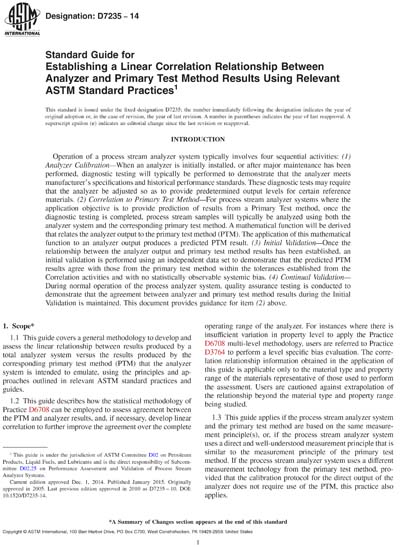Historical
ASTM D7235-14
Standard Guide for Establishing a Linear Correlation Relationship Between Analyzer and Primary Test Method Results Using Relevant ASTM Standard Practices
1.1 This guide covers a general methodology to develop and assess the linear relationship between results produced by a total analyzer system versus the results produced by the corresponding primary test method (PTM) that the analyzer system is intended to emulate, using the principles and approaches outlined in relevant ASTM standard practices and guides.
1.2 This guide describes how the statistical methodology of Practice D6708 can be employed to assess agreement between the PTM and analyzer results, and, if necessary, develop linear correlation to further improve the agreement over the complete operating range of the analyzer. For instances where there is insufficient variation in property level to apply the Practice D6708 multi-level methodology, users are referred to Practice D3764 to perform a level specific bias evaluation. The correlation relationship information obtained in the application of this guide is applicable only to the material type and property range of the materials representative of those used to perform the assessment. Users are cautioned against extrapolation of the relationship beyond the material type and property range being studied.
1.3 This guide applies if the process stream analyzer system and the primary test method are based on the same measurement principle(s), or, if the process stream analyzer system uses a direct and well-understood measurement principle that is similar to the measurement principle of the primary test method. If the process stream analyzer system uses a different measurement technology from the primary test method, provided that the calibration protocol for the direct output of the analyzer does not require use of the PTM, this practice also applies.
ASTM International [astm]

